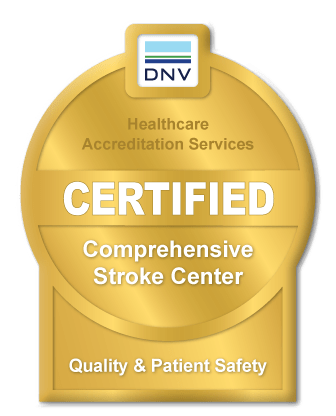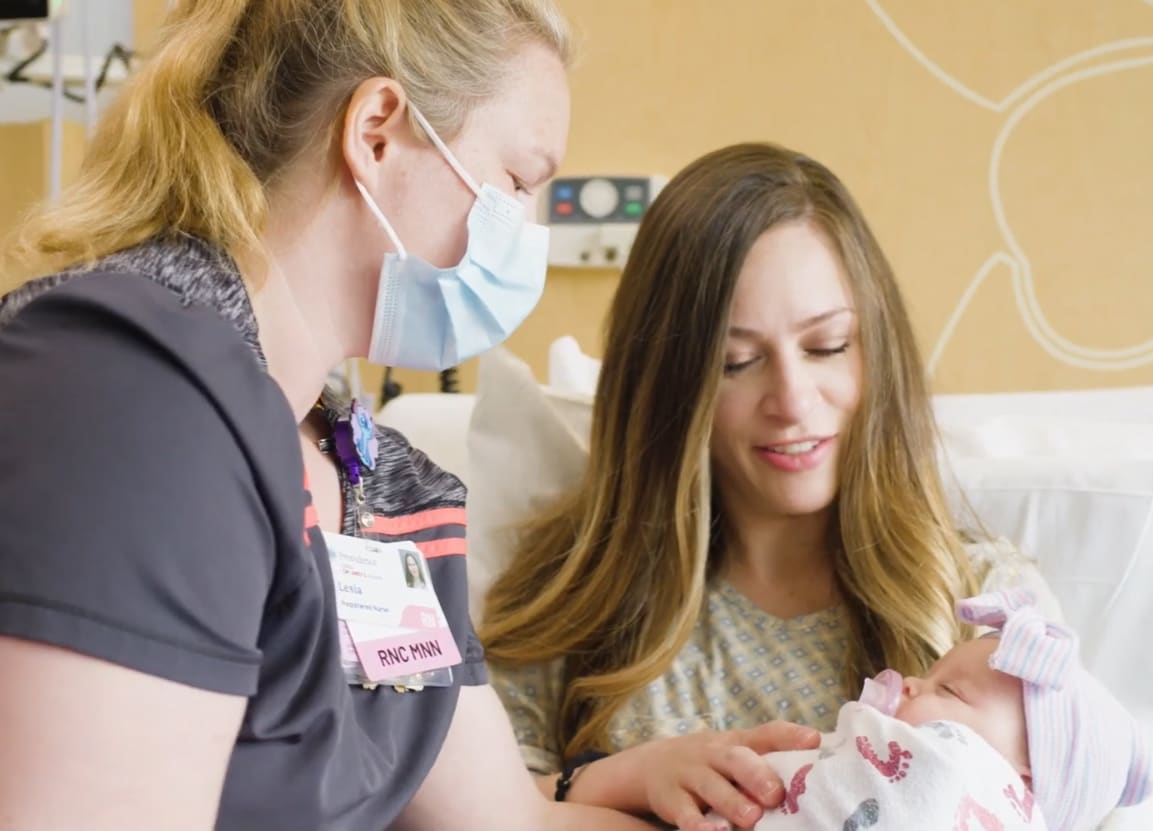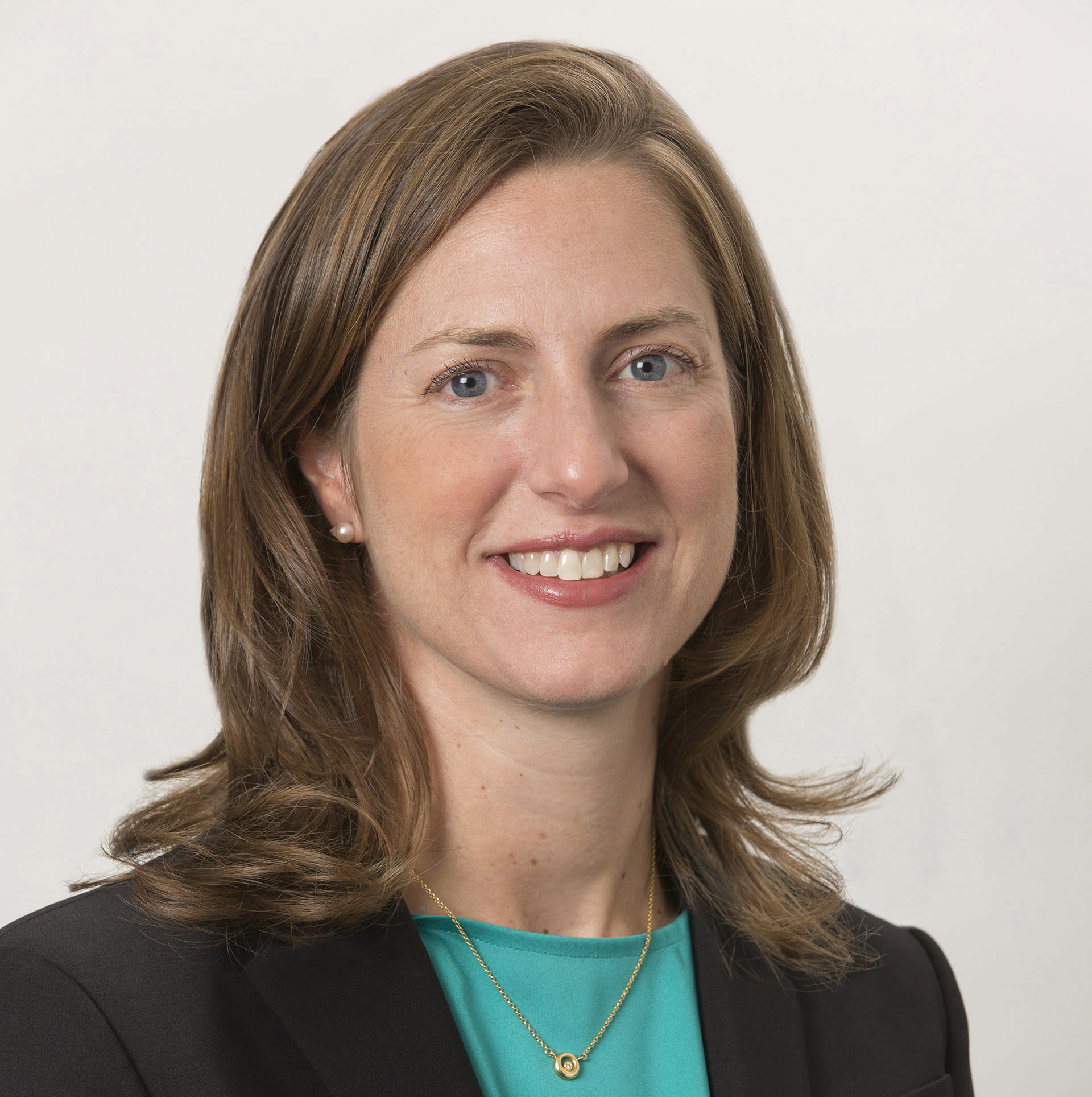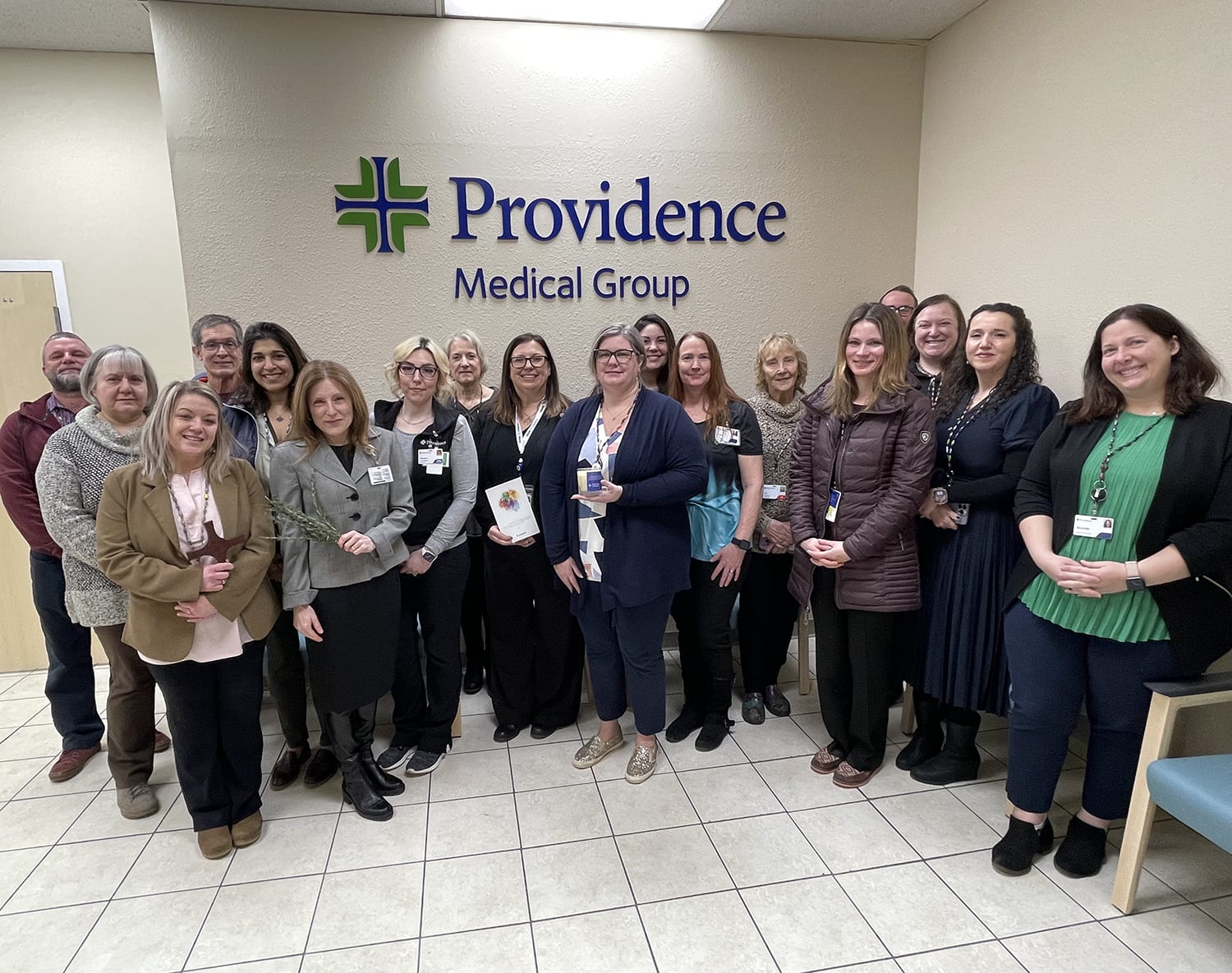Happy with horses: Therapeutic riding program helps Kodiak children thrive
 For more than 120 years, Providence Alaska's commitment to provide for the poor and vulnerable in our state has been unwavering. In 2023, we invested $65 million in total benefit to the communities we serve, including $19 million in free and discounted care.
For more than 120 years, Providence Alaska's commitment to provide for the poor and vulnerable in our state has been unwavering. In 2023, we invested $65 million in total benefit to the communities we serve, including $19 million in free and discounted care.
KODIAK, Alaska — Bristol Morris picks up a curry comb and steps beside Danner, a 29-year-old horse with a thick winter coat. She begins brushing him in circular strokes, and the dark-faced Morgan stands patiently, his eyes drooping in pleasure at the soothing sensation of the brush.
“I like that he’s tall and he’s really soft,” said Bristol, 7, while focusing on her task.
Nearby, 7-year-old Easton Foreman and 8-year-old Adilyn Paulson are doing the same thing. Their horses, 14-year-old Payday and 15-year-old Gus, are equally serene, enjoying the grooming in a warm afternoon sun while the water between Near Island and Kodiak laps on the shore a few hundred feet away.
“This is how we usually start each session,” said Amy Stohl, OTR/L, M.Ed., an occupational therapist at Providence Kodiak Island Medical Center and co-coordinator of Kodiak’s Therapeutic Riding and Equine Assisted Therapy Program. Stohl and Barbara Zimmerman, the island’s only certified therapeutic riding instructor, have been running the program in cooperation with the local 4-H organization for nearly 20 years. In 2023, Providence Alaska provided its first-ever $10,000 grant to help bolster the program. With this much-needed boost, Zimmerman and Stohl say the program could serve even more kids on Kodiak Island.
Equine-assisted therapy has proven to help individuals with neurodiversity autism spectrum disorders, developmental delays, learning difficulties and physical delays by enhancing social skills, improving attention communication, sensory processing and motor coordination. Horses communicate through nonverbal cues by nature and can pick up on human emotions quickly. As such, the horses become healers.
Alexis Foreman watches her son Easton interact with Payday, a patient Appaloosa who not only stands still when Easton brushes him, but also stays steady as the boy uses a hoof pick to wedge dirt from his hooves. Easton has been going to occupational therapy since he was 2, and Stohl introduced him to therapeutic riding in 2019.
“With his sensory processes, Easton craves input on his body,” Alexis said. “And when you see him on the horse, and how he is sitting, it seems to be a calming sensory feeling for him.”
Alexis said when Easton first started equine therapy, he didn’t seem too interested in the grooming process, instead wanting to go straight to riding. But as he’s gotten older, the benefits of these tasks also have become clearer.
“You can tell that it’s extremely calming for him, just like riding is,” she added.
Kodiak’s riding program serves 19 children, which requires at least 20 volunteers. In each session, there are at least three individuals per rider, including a therapist and horse handlers. The horses are thoroughly screened to make sure they can handle the rigors of the specialized tasks they will be asked to complete – such as accommodating mounting blocks, allowing children to sit and lie on their backs, not being spooked by balls, bubbles or abrupt movements – and more.
“They pretty much have to be bomb proof to work for the program,” Stohl said.
The once-a-week summer sessions last one hour per rider and include three elements: equine-assisted therapy, therapeutic riding and hippotherapy.
Hippotherapy means, literally, “treatment with the help of a horse,” and is a therapeutic intervention facilitated by an occupational therapist, physical therapist and speech-language therapist. It uses the horse’s natural gait and movements to provide sensory feedback to riders. A child feels the horse’s movement while riding and can strengthen physically, or even neurologically, as a result.
“It’s amazing to see how fast these kids get their balance,” Zimmerman said.
“We look at the whole child, and we are heavily oriented in meeting all the sensory processes,” Stohl said.
Finally, equine-assisted therapy focuses on the relationship between the rider and the horse. For instance, Easton, upon arrival at Zimmerman’s stable and realizing he would not see his “regular” horse, Lucky, became tearful because he had been looking forward to seeing his summer friend. And Adilyn, after grooming Gus, gave the gentle quarter horse a big hug, smiling broadly. She leaned into his soft, silky side and seemed to breathe him in.
“The kids can get really attached to their horses,” Stohl said. “They create bonds with them that help them socially and emotionally, and they can have big emotions. We let them know that is OK.”
With financial help from Providence, both Zimmerman and Stohl hope to recruit more volunteers and certified instructors so the program can continue long after they retire. Seeing children thrive – like Bristol, who’s overcome anxiety from new situations by gaining confidence riding; Easton, who’s calmed by the physical presence of the horses; and Adilyn, who’s become physically stronger in her core “and has improved her balance, confidence and so much more,” said her mother, Leslie Paulson – makes the countless hours they put in more than worth it.
“That’s why you do it,” Zimmerman said. “You just see the progress in every kid; they are special.”



